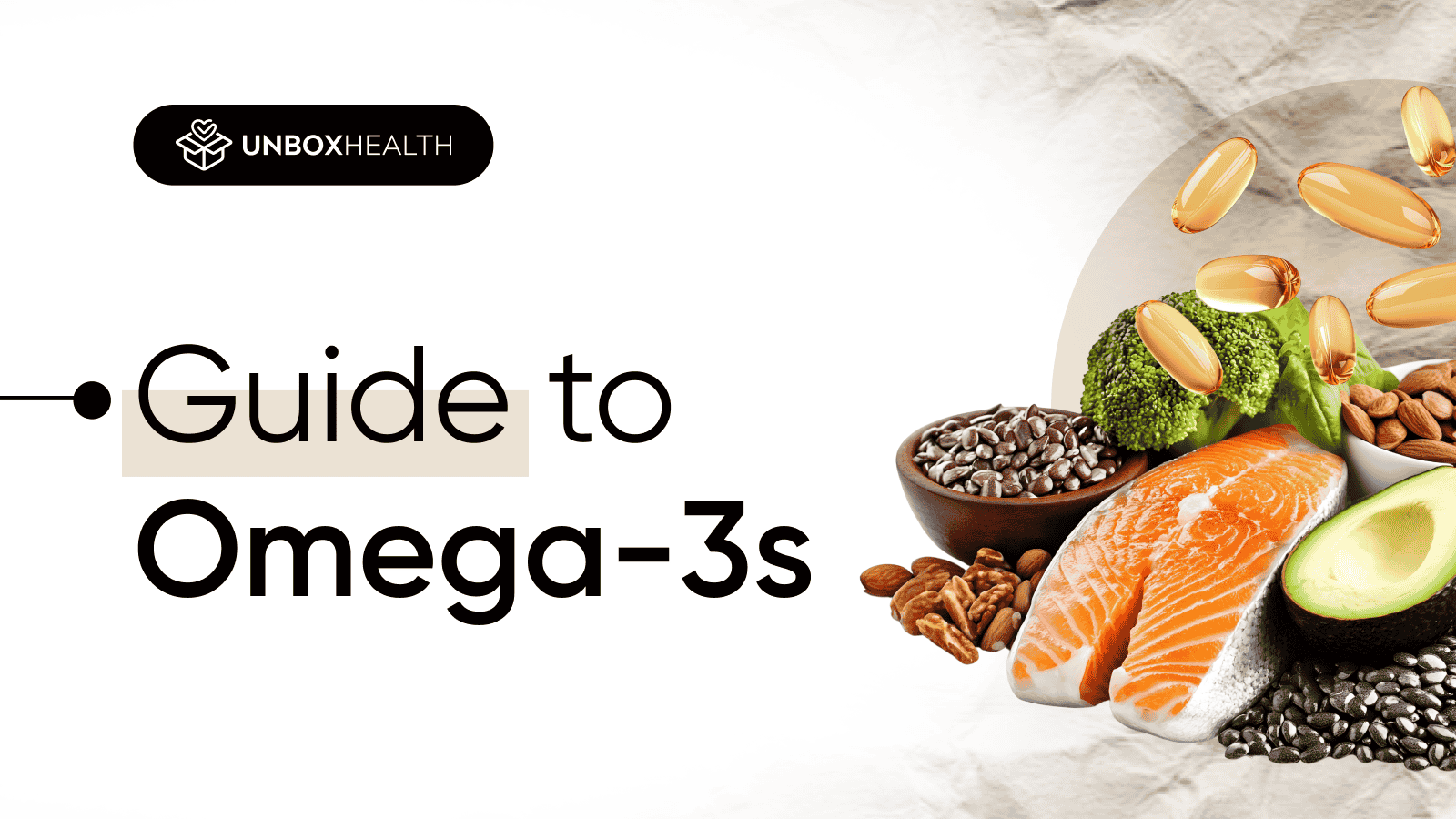In India, our fat intake isn’t just low, it’s skewed. The rise of refined oils, processed foods, and omega-6-rich diets has led to a significant imbalance. The Indian Council of Medical Research (ICMR), FAO, and WHO have jointly revised dietary fat recommendations considering:
- The role of individual fatty acids and non-glyceride bioactive components
- The unique fat sources common in Indian diets
- The availability and affordability of fats
These updates aim to tackle chronic energy deficiency, promote better fetal and infant growth, and address the growing burden of lifestyle diseases like diabetes, obesity, and cardiovascular issues [1][2].
Omega-3s, in particular, are a key player in this shift. But most Indians aren’t getting the right type or the right amount. Let’s cut through the clutter. Not all omega-3s are created equal. Some labels mislead, others confuse. And your diet choices could be giving you far less of the good stuff than you think.
Why Most Indians Fall Short
- Low seafood intake: Many Indians are vegetarians or eat fish rarely.
- High omega-6 fats: Oils like sunflower, safflower, and corn are common in Indian cooking, worsening the omega-3/6 imbalance.
- Over-reliance on ALA: Flax, chia, and walnuts help, but don’t provide direct DHA or EPA.
A recent review (Flock et al., 2013) shows vegetarians often have 30–50% lower blood DHA levels than non-vegetarians.
Types of Omega Fatty Acids
| Omega-3 Type | Sources | Role in the Body |
|---|---|---|
| ALA | Flaxseeds, chia seeds, walnuts | Plant-based. Converts poorly (5–10%) to EPA/DHA [3] |
| EPA | Fatty fish, fish oil, krill oil | Studied to help reduce inflammation, supports immunity and heart health [1][4] |
| DHA | Fatty fish, algae oil | Vital for brain, eyes, fertility, and fetal development [4][6] |
ALA is important but not sufficient. Most over-the-counter omega-3 supplements in India offer only ALA, which your body has to convert into EPA and DHA — a process that is extremely inefficient [3]. This means most people are unknowingly falling short of what their body truly needs.
What to Look for in an Omega-3 Supplement
Here’s how to decode labels and avoid the common traps in the Indian supplement market:
| Claims on Label | Reality | Worth it? |
|---|---|---|
| “Omega-3 rich” | Often just ALA from flax/soy oil, no EPA/DHA | Incomplete source |
| “Fish oil” (no EPA/DHA dosage) | May have minimal active omega-3s or low potency | Needs verification |
| “500 mg Omega-3” | Could be mostly ALA; read ingredients | Not always helpful |
| “EPA 180 mg + DHA 120 mg” | “EPA 180 mg + DHA 120 mg” Combined 300 mg; may be effective if taken 1–2 capsules daily | Clinically dosed |
| “Algal oil – 200 mg DHA” | “Algal oil – 200 mg DHA” Vegetarian source; lacks EPA unless stated | Great for vegetarians |
| “Krill oil” with EPA/DHA values | High bioavailability, lower dosage needed | Advanced users |
| “Flaxseed oil capsules” | Only ALA; no EPA/DHA | Not effective alone |
How Unbox Health Helps You Make Smarter Choices
Tired of biased reviews and confusing claims? Unbox Health is India’s first ratings platform for packaged foods and health supplements, testing products at multiple premium, FSSAI-approved, NABL-accredited labs 100% independently and transparently.
What We Test:
Nutritional Profile & Label Accuracy: We analyze total fatty acid profiles, including omega-3 content like DHA, EPA, and ALA wherever applicable verifying that label claims match the actual contents.
Toxicity Screening: We test for heavy metal contaminants such as lead, cadmium, arsenic, and mercury, which are often overlooked in supplement testing.
Actionable Insights: Our product ratings (D → A+) are based on a holistic framework that includes Label Accuracy, Toxicity, and Nutritional Value.
Let data, not opinions, guide your consumption choices.
Check out unbiased lab-tested ratings of “Omega Supplements” on Unbox Health along with their detailed lab reports.
About Unbox Health
Unbox Health: India’s First Ratings Platform for Packaged Foods and Health Supplement Tired of biased reviews and never-ending claims? At Unbox Health, every product is tested at multiple premium FSSAI-approved NABL-accredited international labs – 100% independently, transparently, and without any brand involvement.
- 100% Transparency: All lab reports are publicly published.
- Zero Hidden Agendas: Products are market-bought with no brand involvement.
- Accurate Testing: Samples tested at up to 3 premium international labs
- Actionable Ratings: Based on Label Accuracy, Toxicity & Nutritional Profile.
Head over to Unbox Health and let the data guide your consumption choices.
References:
- FAO/WHO. (2010). Fats and Fatty Acids in Human Nutrition: Report of an Expert Consultation
- ICMR/NIN. (2020). Dietary Guidelines for Indians
- EFSA Journal. (2010). Scientific Opinion on Dietary Reference Values for fats
- ISSFAL. (2004). Recommendations for Intake of Polyunsaturated Fatty Acids in Healthy Adults
- Eurodiet Project. (2001). Nutritional Goals for European Populations
- World Association of Perinatal Medicine. (2008). Position Statement on Maternal Nutrition
- American Heart Association. (2003). Fish Consumption, Fish Oil, Omega-3 Fatty Acids, and Cardiovascular Disease. Circulation
- Flock MR et al. (2013). Omega-3 Fatty Acid Content of the U.S. Diet: Data from NHANES 2003–2008. Nutrients
